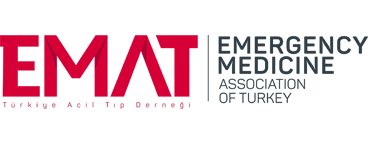Workplace violence against emergency physicians: A cross‑sectional study on the role of communication skills
Mehmet Selim Karpınar1 , Gülden Hakverdi2
, Gülden Hakverdi2 , S. Ayhan Çalışkan3,4
, S. Ayhan Çalışkan3,4
1Ege University Faculty of Medicine, İzmir, Türkiye
2Department of Biostatistics, Sivas Cumhuriyet University, Faculty of Medicine, Sivas, Türkiye
3Department of Medical Education, Faculty of Medicine, İzmir University of Economics, İzmir, Türkiye
4Department of Medical Education, College of Medicine and Health Sciences, United Arab Emirates University, Al-Ain, UAE
Keywords: Communication skills, emergency departments, emergency physicians, healthcare professionals, safety measures, Türkiye, workplace violence
Abstract
OBJECTIVES: Workplace violence (WPV) is a critical issue affecting healthcare professionals, posing significant risks to their safety and well being. This study investigates WPV among emergency physicians in Türkiye, examining the relationship between WPV and physicians’ communication skills.
METHODS: A cross sectional study was conducted from March to June 2023, involving 63 emergency physicians recruited through a convenience sampling method. Participants completed an online survey that included demographic questions, the Turkish version of the Health Professionals Communication Skills Scale (HP CSS TR), and self evaluation items on communication skills.
RESULTS: The findings revealed high WPV prevalence, with 85.7% of participants reporting verbal aggression during their residency and 90.5% during their specialty period. Physical violence was reported by 31.7% of participants during residency and 27.0% during their specialty period. Participants’ HP CSS TR scores averaged 86.08, indicating relatively high communication skills. No significant relationships were found between HP CSS TR scores and demographic characteristics such as gender, age, or years of experience. A moderate positive correlation was observed between participants’ self evaluations and their HP CSS TR scores in the dimensions of empathy and respect, suggesting alignment between perceived and actual communication skills in these areas. Weak correlations were found in informative communication and social skills, highlighting areas for improvement in communication training programs.
CONCLUSIONS: This study highlights the critical issue of WPV against emergency physicians and its association with communication skills, emphasizing the complexities of high stress environments such as emergency departments. It underscores the need for continued research and systemic interventions to enhance workplace safety and the well being of healthcare professionals.
How to cite this article: Karpınar MS, Hakverdi G, Çalışkan SA. Workplace violence against emergency physicians: A cross-sectional study on the role of communication skills. Turk J Emerg Med 2025;25:123-9.
The data collection in the present study was conducted after the approval of Ege University Scientific Research, and Publication Ethics Boards dated February 23, 2023 Ref. #23‑2.1T/47. We confirm that all methods used in this study were carried out in accordance with relevant guidelines and regulations.
MSK: Conceptualization, Methodology, Data curation, Project administration, Writing – original draft, Writing – review and editing.
GH: Conceptualization, Methodology, Data curation, Formal analysis, Writing – original draft, Writing – review and editing.
SAÇ: Conceptualization, Methodology, Data curation, Project administration, Supervision, Writing – original draft, Writing – review a006Ed editing.
None Declared.
None.

